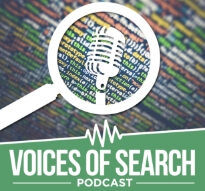Writing for SEO vs marketing writing — Sara Kieffer-Hess // Booz Allen Hamilton
Sara Kieffer-Hess
Booz Allen Hamilton

- Part 1Schema & structured data’s role in SEO — Sara Kieffer-Hess // Booz Allen Hamilton
- Part 2 Writing for SEO vs marketing writing — Sara Kieffer-Hess // Booz Allen Hamilton
Show Notes
-
·03:14 - Writing for SEO vs. writing for marketing SEO writing requires a user-friendly, structured approach to cater to readability and search engine ranking factors. In contrast, marketing writing often uses jargon and sophisticated language, which can hinder capturing user traffic as it doesn't align with typical search behavior. ·06:58 - Writing for user intent Writing for user intent involves aligning your content strategy with your audience's needs and their position in the marketing fu el. It entails identifying the search intent behind keywords and tailoring content and assets to effectively guide users through the fu el toward conversions. ·08:35 - Writing for different stages of the fu el Writing for different fu el stages means adjusting content to match evolving user intent. Begin with simple explanations in the awareness phase, progress to more sophistication as users understand more, and in the decision phase, address specific user preferences and needs. ·12:34 - Optimizing page structure for a seamless user experience Structure individual pages with an inverted pyramid approach, starting with the main point, followed by clear headings and readable content structures. Include an FAQ section at the end to ensure easy navigation and understanding for all site visitors, regardless of their entry point. ·15:10 - An overview of plain language Plain language is a US government initiative, ensuring government agency websites comply with accessibility standards. It involves simplifying information to a level that is readable by the majority of Americans and adheres to general writing best practices for better readability. ·16:41 - The link between writing and accessibility In the context of writing and accessibility, screen readers read headings and links out of context. Therefore, contextually relevant headings and anchor text for links are crucial to enhance accessibility.
Episode Summary
-
·"What we found in search through years of research and data is that you have to speak in a simpler language to capture the audience and the users to come to your site." - Sara Kieffer-Hess ·"At the begi ing of pages, I recommend starting with the inverted pyramid approach. Give the answer or main point upfront, as most users tend to scan the rest of the content." - Sara Kieffer-Hess ·"Writing and accessibility go hand in hand; screen readers rely on clear headings and meaningful link text." - Sara Kieffer-Hess
- Part 1Schema & structured data’s role in SEO — Sara Kieffer-Hess // Booz Allen Hamilton
- Part 2 Writing for SEO vs marketing writing — Sara Kieffer-Hess // Booz Allen Hamilton
Up Next:
-
Part 1Schema & structured data’s role in SEO — Sara Kieffer-Hess // Booz Allen Hamilton
Sara Kieffer-Hess, Lead Associate at Booz Allen Hamilton, explores enhancing search visibility with schema, structured data, and SEO content creation. Schema and structured data are powerful tools for improving SEO by providing context and enhancing the visibility of web content. However, there has been a noticeable decline in people implementing schema markup due to misconceptions surrounding it. Today, Sara discusses schema and structured data's role in SEO
Play Podcast -
Part 2Writing for SEO vs marketing writing — Sara Kieffer-Hess // Booz Allen Hamilton
Sara Kieffer-Hess, Lead Associate at Booz Allen Hamilton, explores enhancing search visibility with schema, structured data, and SEO content creation. Writing for SEO and marketing differ significantly in their focus and purpose. This distinction is crucial as it ensures content effectively serves both search engine visibility and audience engagement, contributing to overall marketing success. Today, Sara discusses writing for SEO versus marketing writing.








